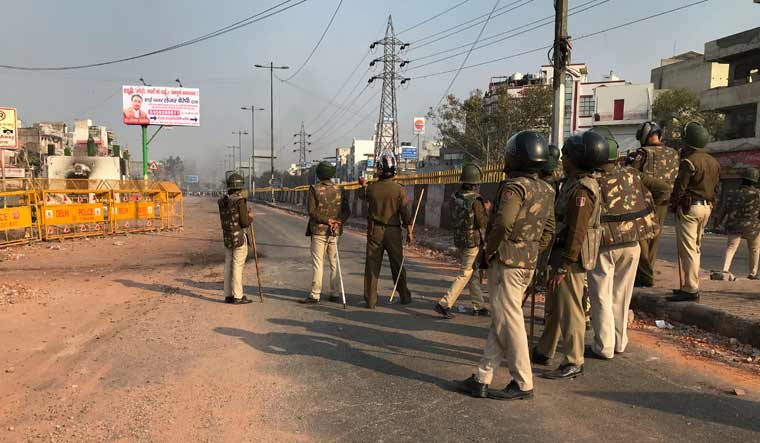As violence continued for the third day on Tuesday in Northeast Delhi, harrowing pictures have been emerging from the riot-hit areas. The scale of violence is unheard of in Delhi in the recent times, thus raising questions over the ability of Delhi Police to curb riots in the national capital.
On Tuesday, the death count rose to ten, including a head constable, while over 80 people have been injured. Three journalists were also injured, including one with gunshot, as they were attacked by violent mobs while reporting from the affected areas.
The clashes which started between those opposing and supporting the Citizenship Amendment Act took a communal turn even as US President Donald Trump was on an official visit to New Delhi. The government sources pointed out that the timing of the violence could be a conspiracy to defame India. When Trump was asked about the violence, he said though he did not raise the particular incidents of violence, he discussed the issue of religious freedom with Prime Minister Narendra Modi.
“We did talk about religious freedom. The PM said he wants people to have religious freedom. They have worked really hard on it. I heard about the individual attacks but I did not discuss it. It is up to India,” Trump said in a press conference.
Barring minor flare ups, the last time riots took place in Delhi was in 2014 in Trilokpuri, but there was no casualty. Delhi had witnessed large-scale anti-Sikh riots in 1984 after assassination of then prime minister Indira Gandhi.
The current incidents, with their communal colour, have brought a new dimension to the anti-CAA protests. Stone-pelting, use of guns and petrol bombs have turned the issue into much more polarising. This is likely to have a bearing on the other ongoing protests across the country as any big anti-CAA protest may witness a counter protest.
The violence has started on Sunday when some anti-CAA protesters blocked roads in Jafrabad. BJP leader Kapil Mishra led a pro-CAA crowd demanding roads be opened and even threatened to take action, giving Delhi Police three days' time. Mishra's provocative statement drew flak from various quarters. BJP MP Gautam Gambhir said action should be taken against anyone making provocative speech. Mishra took to Twitter to defend his statement saying he was being targeted as he 'looked terror in the eyes', and questioned Kejriwal for appeasing Muslims.
A few days back, AIMIM leader Waris Pathan had made an incendiary statement during an anti-CAA rally in Bengaluru after which a case was registered against him.
As Delhi Police comes under the jurisdiction of the Ministry of Home Affairs, Union Home Minister Amit Shah called a meeting of Delhi Lieutenant Governor Anil Baijal, Chief Minister Arvind Kejriwal, state chiefs of the BJP and the Congress. After the meeting, the leaders called for peace and demanded strict action against those indulging in violence. After a token sit-in at Rajghat, Kejriwal went to meet the injured in the hospital.
By Tuesday evening, around 40 companies of armed forces have been deployed in the violence-hit areas. The police and Rapid Action Force jawans took out flag marches.
The violence has come ahead of the apex court hearing on the Shaheen Bagh protest. Several petitions had been filed for removal of women from the protest site and open a key road linking Delhi and Noida. The court may take note of the violence while hearing the case. After the Jamia violence, the Supreme Court had refused to hear petitions saying first the violence has to stop.



